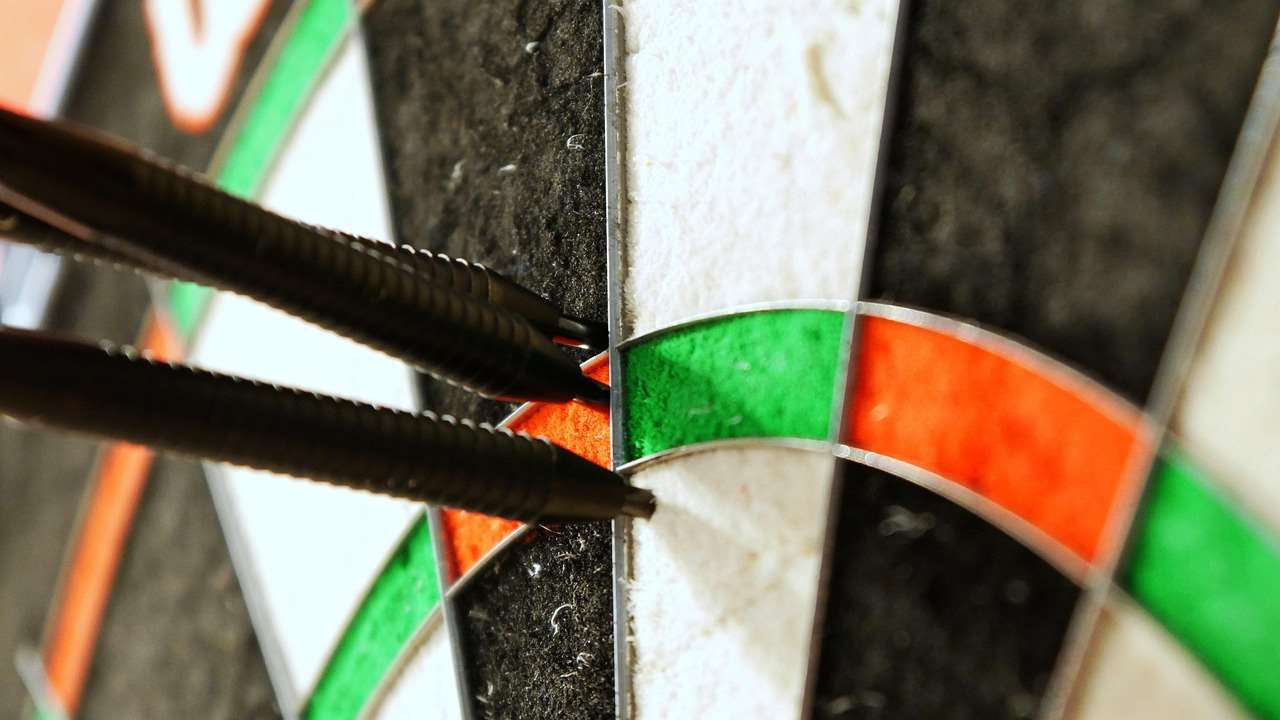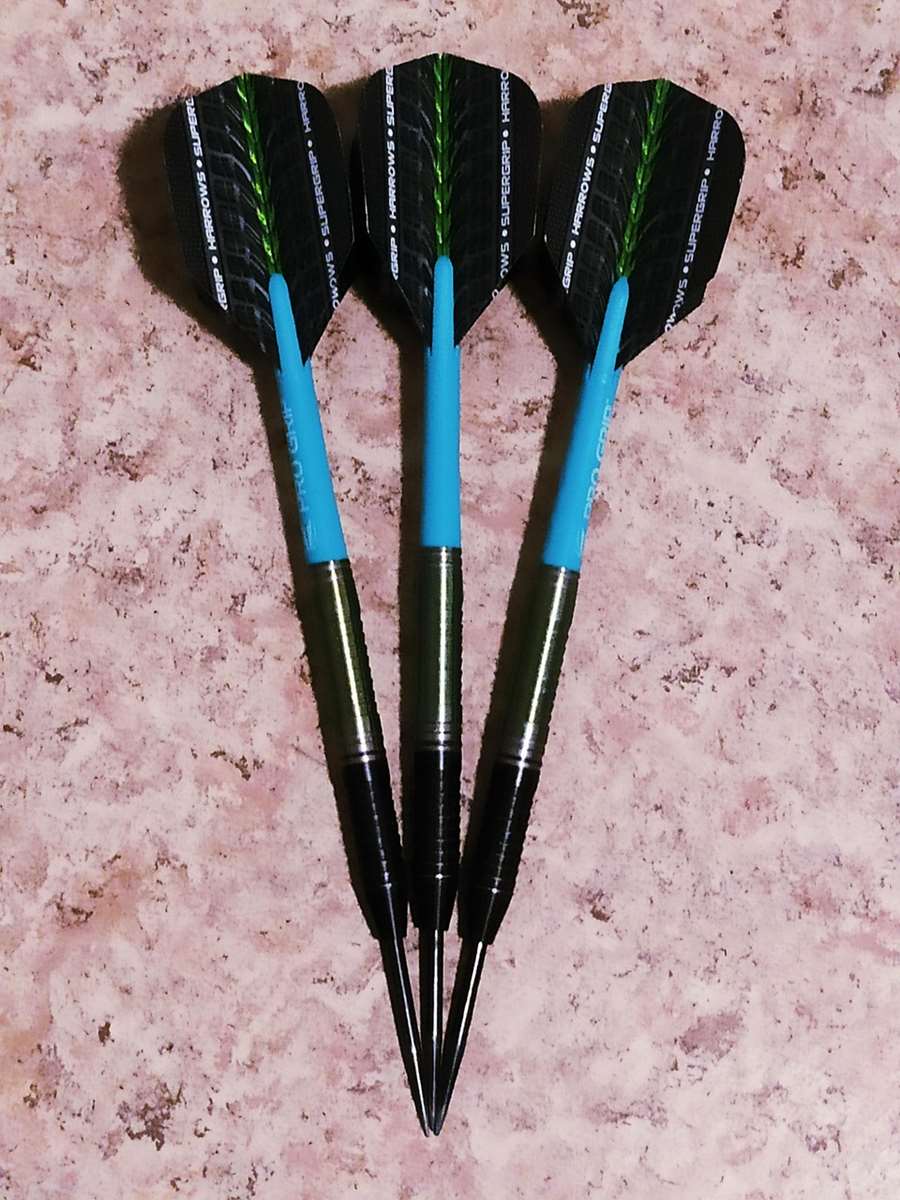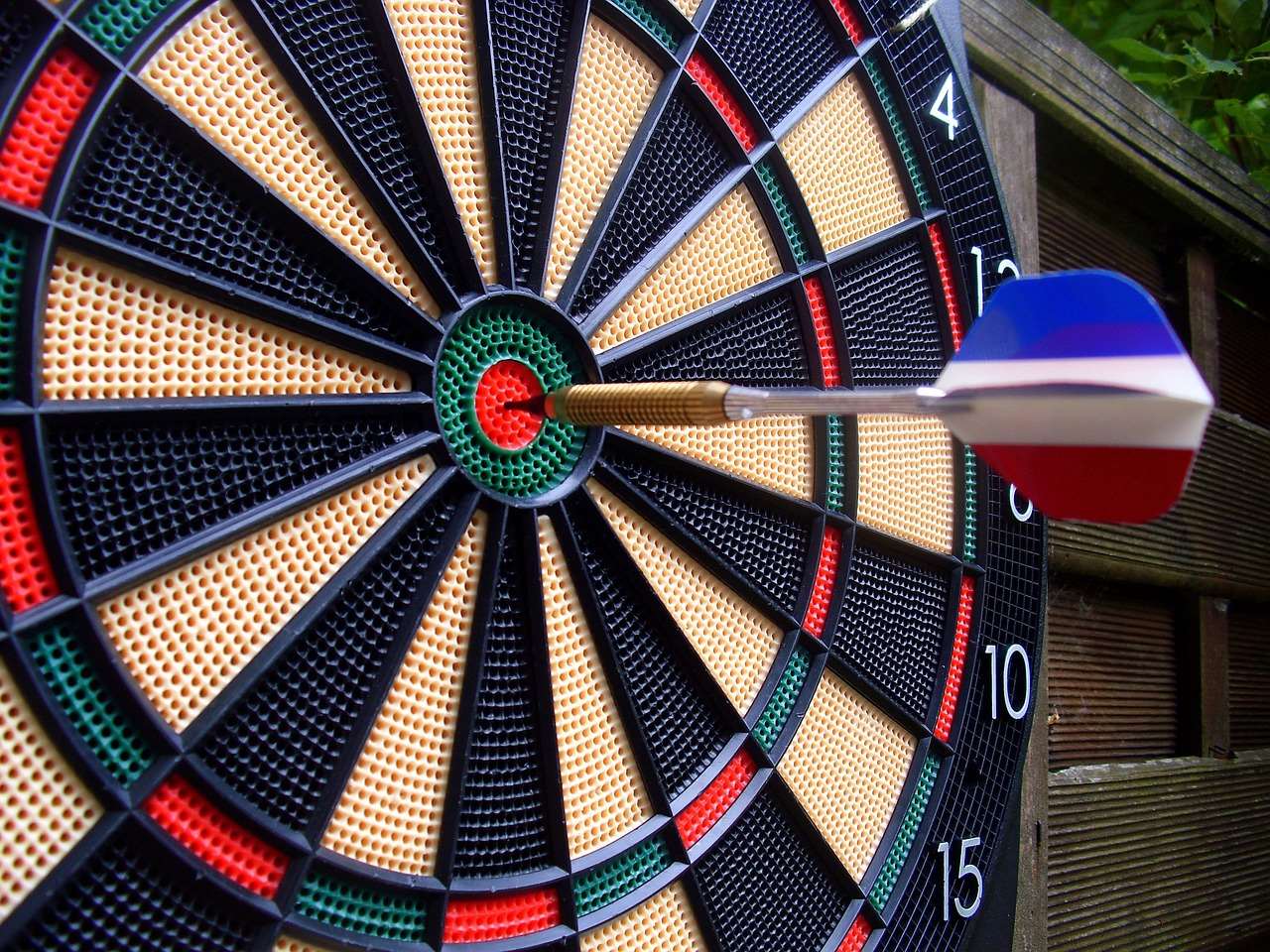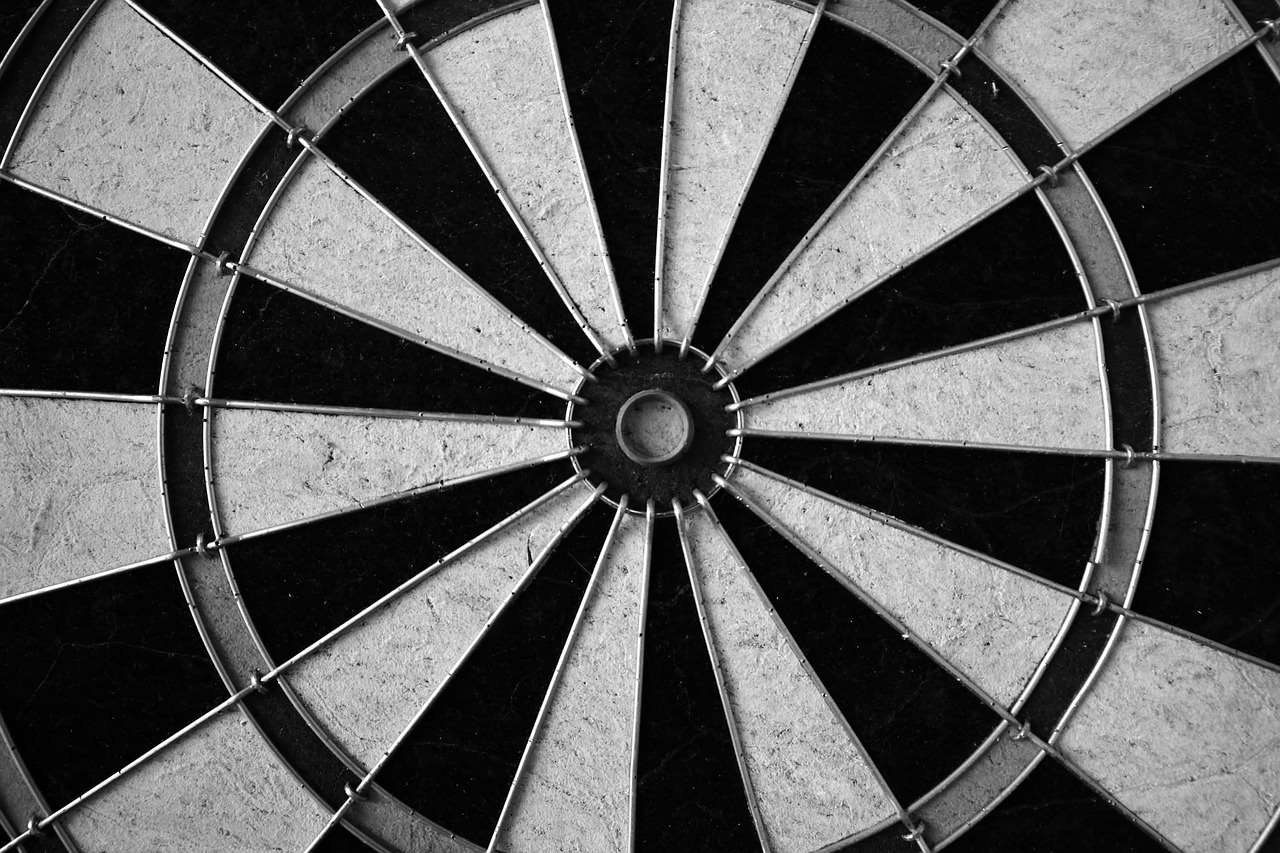Understanding the dartboard height standard official is crucial for fair play and consistent practice. Setting the correct official dartboard height ensures that every game, whether casual or competitive, is played on a level playing field, so read on to learn the exact measurements and how to achieve them! This article will cover everything you need to know about setting up your dartboard, from measuring techniques to troubleshooting common installation errors.
⚠️ Still Using Pen & Paper (or a Chalkboard)?! ⚠️
Step into the future! The Dart Counter App handles all the scoring, suggests checkouts, and tracks your stats automatically. It's easier than you think!
Try the Smart Dart Counter App FREE!Ready for an upgrade? Click above!
Why the Dartboard Height Standard Official Matters
The dartboard height standard official isn’t just an arbitrary number; it’s the foundation upon which the entire game is built. Think about it: if the height is off, even slightly, it affects your throwing motion, your aiming point, and ultimately, your accuracy. Consistently playing with the correct height allows you to develop muscle memory and improve your darting skills over time. Ignoring the standard dartboard height can lead to inconsistent results and frustration.
Moreover, adhering to the official dartboard regulations ensures fairness in competitive play. Imagine competing in a tournament where each board is set at a different height; it would be chaos! The standardized height levels the playing field, allowing players to focus on their skill rather than adjusting to varying conditions.

The Exact Measurements: How High Should Your Dartboard Be?
Now, let’s get down to the specifics. The dartboard height standard official, as defined by the World Darts Federation (WDF) and the Professional Darts Corporation (PDC), is measured from the floor to the center of the bullseye. This measurement should be:
- 5 feet 8 inches (5′ 8″)
- 68 inches
- 173 centimeters
It’s crucial to use a reliable measuring tool, such as a tape measure or laser level, to ensure accuracy. Don’t eyeball it! A small difference can have a significant impact on your game. Make sure the floor is also level. If it is not, you may have to make adjustments to your measuring to compensate.
Toe Line Measurement: The Oche Distance
While we’re focusing on height, it’s important to remember the oche distance, which is the distance players must stand from the dartboard when throwing. The official oche distance is:
- 7 feet 9 1/4 inches (7′ 9.25″)
- 93.25 inches
- 237 centimeters
Ensure that the oche is clearly marked and consistently measured for fair play.
Step-by-Step Guide to Mounting Your Dartboard at the Official Height
Mounting your dartboard at the dartboard height standard official doesn’t have to be a daunting task. Here’s a simple, step-by-step guide to help you get it right:
- Gather your tools: You’ll need a tape measure, a pencil, a level, a drill (if mounting on a hard surface), and appropriate screws or fixings for your wall type.
- Mark the bullseye position: Measure 68 inches (173 cm) from the floor and mark this spot on the wall. This is where the center of your bullseye will be.
- Mount the dartboard bracket: Most dartboards come with a mounting bracket. Position the bracket on the wall, centered on the mark you made, and use a pencil to mark the screw holes.
- Drill pilot holes (if necessary): If you’re mounting on a hard surface like brick or concrete, drill pilot holes at the marked locations.
- Secure the bracket: Attach the bracket to the wall using the appropriate screws or fixings. Make sure it’s securely fastened.
- Hang the dartboard: Carefully hang the dartboard onto the bracket.
- Double-check the height: Use your tape measure to confirm that the distance from the floor to the center of the bullseye is exactly 68 inches (173 cm). Use a level to confirm the dartboard is perfectly vertical.

Troubleshooting Common Installation Issues
Even with careful planning, you might encounter some challenges when mounting your dartboard. Here are a few common issues and how to address them:
- Uneven Floor: If your floor is uneven, use a level to find the highest point and measure 68 inches (173 cm) from that point. Alternatively, consider shimming the dartboard to compensate for the unevenness.
- Weak Wall: If you’re mounting on a drywall or plasterboard wall, use wall anchors to provide extra support. These anchors distribute the weight of the dartboard more evenly.
- Dartboard Wobbling: If your dartboard wobbles after mounting, check that the bracket is securely attached to the wall and that the dartboard is properly seated on the bracket. Consider adding shims behind the bracket for extra stability.
Sometimes, you might have to consider adapting darts rules for small spaces if your setup isn’t ideal.
Dartboard Types and Their Impact on Mounting
While the dartboard height standard official remains the same regardless of the type of dartboard, the mounting process can vary slightly. Here’s a quick overview of different dartboard types and their mounting considerations:
- Bristle Dartboards: These are the most common type of dartboard and are typically mounted using a bracket system as described above. They often include a rotating number ring, which can help to extend the life of the board.
- Electronic Dartboards: Electronic dartboards usually have a built-in mounting system, but it’s still crucial to ensure they’re mounted at the official dartboard height. Be mindful of power cord placement when mounting.
- Magnetic Dartboards: While less common for serious play, magnetic dartboards are often lighter and easier to mount. However, always verify the height and ensure the board is securely attached.

Maintaining Your Dartboard After Installation
Once your dartboard is properly installed at the dartboard height standard official, it’s important to maintain it to prolong its lifespan and ensure optimal performance. Here are a few tips:
- Rotate the Number Ring: Regularly rotate the number ring to distribute wear and tear evenly across the dartboard’s surface.
- Remove Darts Correctly: Avoid twisting or yanking darts when removing them. Gently pull them straight out.
- Keep the Dartboard Clean: Use a soft brush or cloth to remove any dust or debris from the dartboard’s surface.
- Avoid Moisture: Keep your dartboard in a dry environment to prevent damage from moisture.
The Psychology of the Standard Height: Mind Over Matter
Beyond the technical aspects, there’s a psychological component to the dartboard height standard official. When you consistently practice and play at the correct height, your brain and body become attuned to that specific setup. This familiarity can boost your confidence and improve your performance. Using the appropriate height enables Basic Darts Fundamentals for Beginners to be effective.
Conversely, if you constantly play at varying heights, your brain may struggle to adapt, leading to inconsistent throws and diminished confidence. Sticking to the standard dartboard height helps create a sense of predictability and control, allowing you to focus on your technique and strategy.
Dartboard Height Standard Official: Common Misconceptions
Let’s debunk some common misconceptions about the dartboard height standard official:
- Misconception #1: A few inches don’t matter. As mentioned earlier, even small differences in height can significantly affect your throwing motion and accuracy.
- Misconception #2: The height is just for professionals. The official dartboard height applies to all levels of play, from casual games at home to competitive tournaments.
- Misconception #3: The height is different for different dartboard types. The dartboard height standard official is the same for all standard dartboards, regardless of type.
- Misconception #4: Oche distance is not important. Oche distance is critical because it allows you to find your rhythm and maintain consistency.

Adapting the Game for Different Players
While the dartboard height standard official is the rule, there might be situations where you need to adapt the game for different players, such as children or individuals with disabilities. In these cases, you can temporarily lower the dartboard or adjust the throwing distance to make the game more accessible and enjoyable. But it’s really about adapting darts rules for beginners.
However, it’s important to note that these adaptations should be made with consideration for fairness and consistency. If you’re playing with a mix of players with varying abilities, consider implementing handicap rules to level the playing field.
Advanced Tips for Perfect Dartboard Setup
Beyond the basics, here are some advanced tips to ensure your dartboard setup is perfect:
- Use a Laser Level: A laser level can help you precisely align the dartboard and ensure it’s perfectly vertical.
- Consider a Dartboard Surround: A dartboard surround protects your wall from stray darts and can also help to reduce noise.
- Invest in Good Lighting: Proper lighting is essential for accurate aiming. Use a dedicated dartboard light to illuminate the board evenly.
- Regularly Check Your Setup: Periodically check the dartboard height standard official and oche distance to ensure they haven’t shifted over time.
Beyond the Basics: The History of Dartboard Standards
While focusing on the present-day dartboard height standard official is crucial, it’s interesting to delve into the history of these standards. The standardization of dartboard dimensions and rules has evolved over time, contributing to the game’s widespread popularity and recognition. Historically, variations existed, but the establishment of organizations like the WDF and PDC helped solidify the current standards, including the crucial height measurement. Understanding this evolution adds context to the importance of adhering to the established regulations.

Conclusion: Mastering the Dartboard Height Standard Official
In conclusion, understanding and adhering to the dartboard height standard official is paramount for fair play, consistent practice, and optimal performance. Whether you’re a casual player or a seasoned competitor, taking the time to properly install your dartboard at the correct height will undoubtedly enhance your enjoyment of the game. Remember the key measurements: 5 feet 8 inches (68 inches or 173 centimeters) from the floor to the bullseye. So, grab your measuring tape, follow our step-by-step guide, and get ready to elevate your darting experience! Now that you know the official dartboard regulations, why not explore some fun dart game variations?
Hi, I’m Dieter, and I created Dartcounter (Dartcounterapp.com). My motivation wasn’t being a darts expert – quite the opposite! When I first started playing, I loved the game but found keeping accurate scores and tracking stats difficult and distracting.
I figured I couldn’t be the only one struggling with this. So, I decided to build a solution: an easy-to-use application that everyone, no matter their experience level, could use to manage scoring effortlessly.
My goal for Dartcounter was simple: let the app handle the numbers – the scoring, the averages, the stats, even checkout suggestions – so players could focus purely on their throw and enjoying the game. It began as a way to solve my own beginner’s problem, and I’m thrilled it has grown into a helpful tool for the wider darts community.